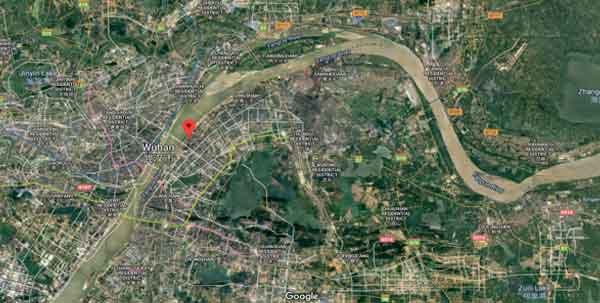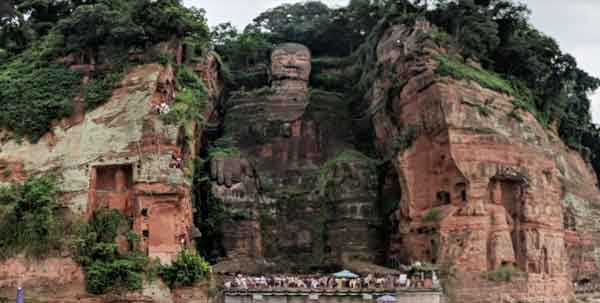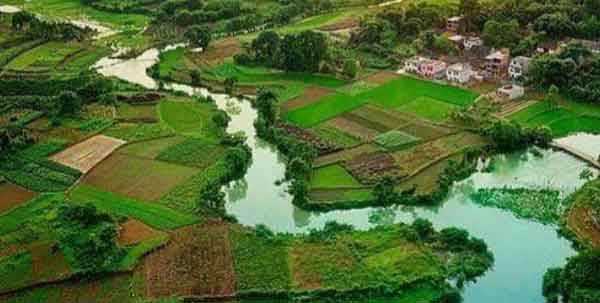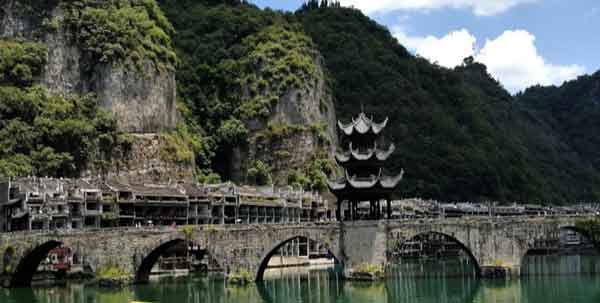
Yunnan is an inland province
From a general view of geographical location, Yunnan is against the vast Asian Continent in the east and north, and the Indo-China peninsula in the south. Yunnan is an inland province, with Guizhou province and Guangxi Zhuang Autonomous Region on the east, Tibet Autonomous region on the northwest, and the Qinghai - the roof of the world: the Tibet Plateau - on the northwest. Besides, it shares the Yangtze River as a common boundary with Sichuan province in the northeast. Furthermore, Yunnan borders on Myanmar (formerly called Burma) in the west, and Laos and Vietnam in the south. Under the influence of the southeast Pacific monsoon, the southwest monsoon from the Indian ocean an the influence of the Tibetan Plateau, Yunnan boasts a varied natural climatic environment.
Yunnan minorities behind its frontiers
Yunnan borders on three countries, Myanmar, Laos, and Vietnam, with a length of 4,060 km boundary line. In Yunnan, the China-Myanmar boundary line is 1,997 kilometers long, the China-Laos boundary line 710 kilometers, and the China-Vietnam boundary line 1,353 kilometers. Simao Prefecture in Yunnan is connected to all three foreign countries. It is notable that 16 of the 25 ethnic minorities in the Yunnan province also live across the borders in the neighboring countries or provinces. Ever since ancient times, close economic and cultural ties have long been established between Southeast Asia and Yunnan.
The Shushendudao (the passage from southwest China to ancient India) - which is now called the South Silk Route - existed even before 2 BC when Zhan Qian found the passage from the territory of the Han Dynasty to the Western Regions. In other words, it is more than 2000 years ago that Yunnan was the land gateway from China to Southeast Asia and India and that it was the passage for the Chinese people to developed relations as well as economic and trade ties with the people in that countries.

Highlights in Sichuan province - northeast of Yunnan
- Chengdu, the capital of Sichuan province, is known for its fantastic back streets, great tea houses, its opera, and giant pandas
- Western Sichuan is noted because of its soaring snow-capped peaks and glaciers, its extensive grasslands, and the Tibetan influence is clearly visible
- Grand Buddha is the world's largest Buddha statue. It is sitting in splendor across from the city of Leshan
- EmeiShan is one of China's four Buddhist sacred mountains. This mountain is great for hiking and monastery hopping

Highlights in Tibet Autonomous region - northwest of Yunnan
- Of course, the Tibetan people
- Lhasa and Potala palace
- The endlessly wandering in the Barkhor circuit
- Jokhang
- The colors and the nomads of the Changtang at Nam-Tso
- Staring at the views of Everest's north face from Rongphu monastery

Highlights in Guangxi Zhuang Autonomous region - east of Yunnan
- Yangshuo is famed for its gorgeous karst scenery and laid-back atmosphere
- Longsheng/Sanjiang: a mountain town and the gateway to many minority villages, terraced fields, and beautiful sceneries

Highlights in Guizhou province - east of Yunnan
- The south-eastern region is dotted with remote minority villages of the Miao and Dong and is the site of countless festivals
